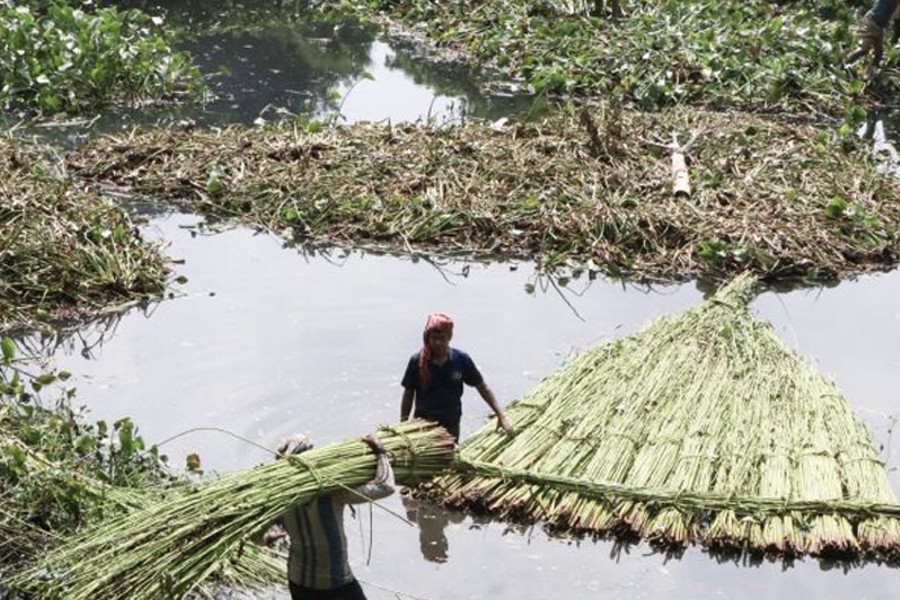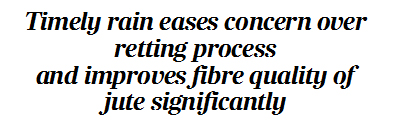
Published :
Updated :

Hopes are arising in farmers as timely monsoon rains have accelerated jute cultivation in Rajshahi district this season, beckoning prospect for a bumper harvest and better returns.
After a dry spell during sowing and initial growth of plants, recent rains have filled local waterbodies, easing concern over the critical retting process and significantly improving the fibre quality of jute.
According to the Department of Agricultural Extension (DAE), Rajshahi, the district has surpassed its jute cultivation target this year, with 17,305 hectares of land brought under the farming-exceeding the planned 17,185 hectares and marking a record for the past several years.
Recently visiting Paba, Mohanpur, and Durgapur upazilas, this correspondent found vibrant fields of mature jute here and there.
Farmers are now immersed in labour-intensive harvesting activities-cutting jute, bundling, soaking, and extracting the golden fibre.
The harvesting began in mid-Asharh (early July) and is expected to continue through the month of Srabon (August).
"This year started with uncertainty," said Shahidul Islam, a farmer from Paikpara in Paba. "Due to the lack of rain, irrigation costs doubled. But now, with full ponds and canals, we are retting the jute properly. The quality of the fibre-soft, long, and golden-will fetch us a higher price."
Traditionally, jute is sown between late Falgun and the month of Baishakh. Farmers this year sowed on schedule but faced challenges with irrigation and fears of fibre quality deterioration due to inadequate waterbodies for retting. Poor retting conditions typically cause fibre to darken and toughen, lowering its market value by up to 50 per cent.
The recent rainfall, however, has transformed the outlook. With ample water available, retting is being done under ideal conditions, resulting in higher-grade fibre.
Production costs, however, have risen. Selim Reza, a farmer from Darshanpara Union, noted that cultivation cost per bigha has surged to Tk17,000-18,000, primarily due to higher prices of seeds, fertilisers, pesticides, and labour. Labour costs alone have increased to Tk500-600 per worker per day, with 10-12 workers needed for post-harvest processing.
"Despite the higher input costs, we expect yields of 10-12 maunds per bigha," Reza said. "Given the quality of fibre, if market prices hold or rise, we should be able to recover our investment and still make a decent profit."
Current wholesale market prices for jute in Rajshahi range between Tk 3,000 and Tk 3,800 per maund depending on quality, according to Sumonto, a field inspector with the Department of Agricultural Marketing. "These are early-season rates," he added. "With more premium white jute entering the market soon, prices are likely to go up."
Umm-e-Salma, deputy director of the DAE, Rajshahi, shared her optimism about this season's yield. "The area under cultivation has exceeded targets, and the crop quality is significantly better than in recent years. With retting no longer a bottleneck, we expect farmers to receive favourable prices."
anaetru@gmail.com


 For all latest news, follow The Financial Express Google News channel.
For all latest news, follow The Financial Express Google News channel.